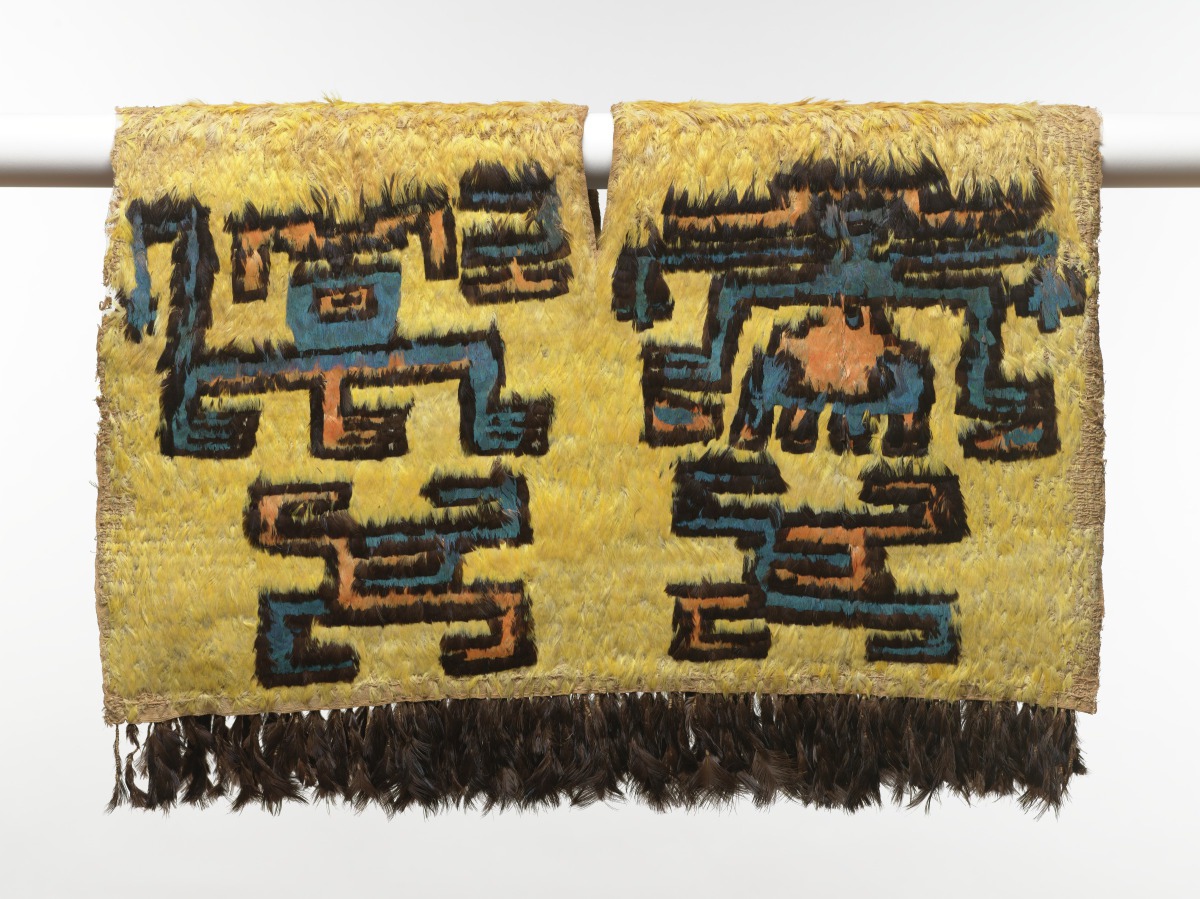
Tabard (Primary Title)
Outer garment (Object Name)
Unknown (Artist)
Perhaps considered the most precious luxury item by Ancient Americans, this masterpiece of Andean featherwork is one of only three Nazca tabards known to exist. The name tabard applies to this garment because it was designed to hang straight down from the bearer’s shoulders and was not tied or sewn at the sides, which allowed the feathers to hang freely and catch the light.
The feathers come from tropical Amazonian birds but the exact species of each feather is yet to be determined. Based on other known examples of Nazca and Wari featherworks, however, the blue and yellow feathers are probably from the macaw and the coral-colored feathers from the flamingo.
The imagery on the tabard is not exactly understood, but there appears to be depicted a six-legged supernatural creature with feline fangs and claws on the front of the garment. The other forms depicted are most likely marine creatures, resembling sea animals also seen on Nazca ceramics.
Masterpieces of Pre-Columbian Art, VMFA Artmobile, February, 1976 - May, 1977
Art before Columbus, Artmobile, 1961-1964
Unnamed exhibition, Norfolk Museum of Art & Science, April 11 - June 30, 1970
Some object records are not complete and do not reflect VMFA's full and current knowledge. VMFA makes routine updates as records are reviewed and enhanced.
